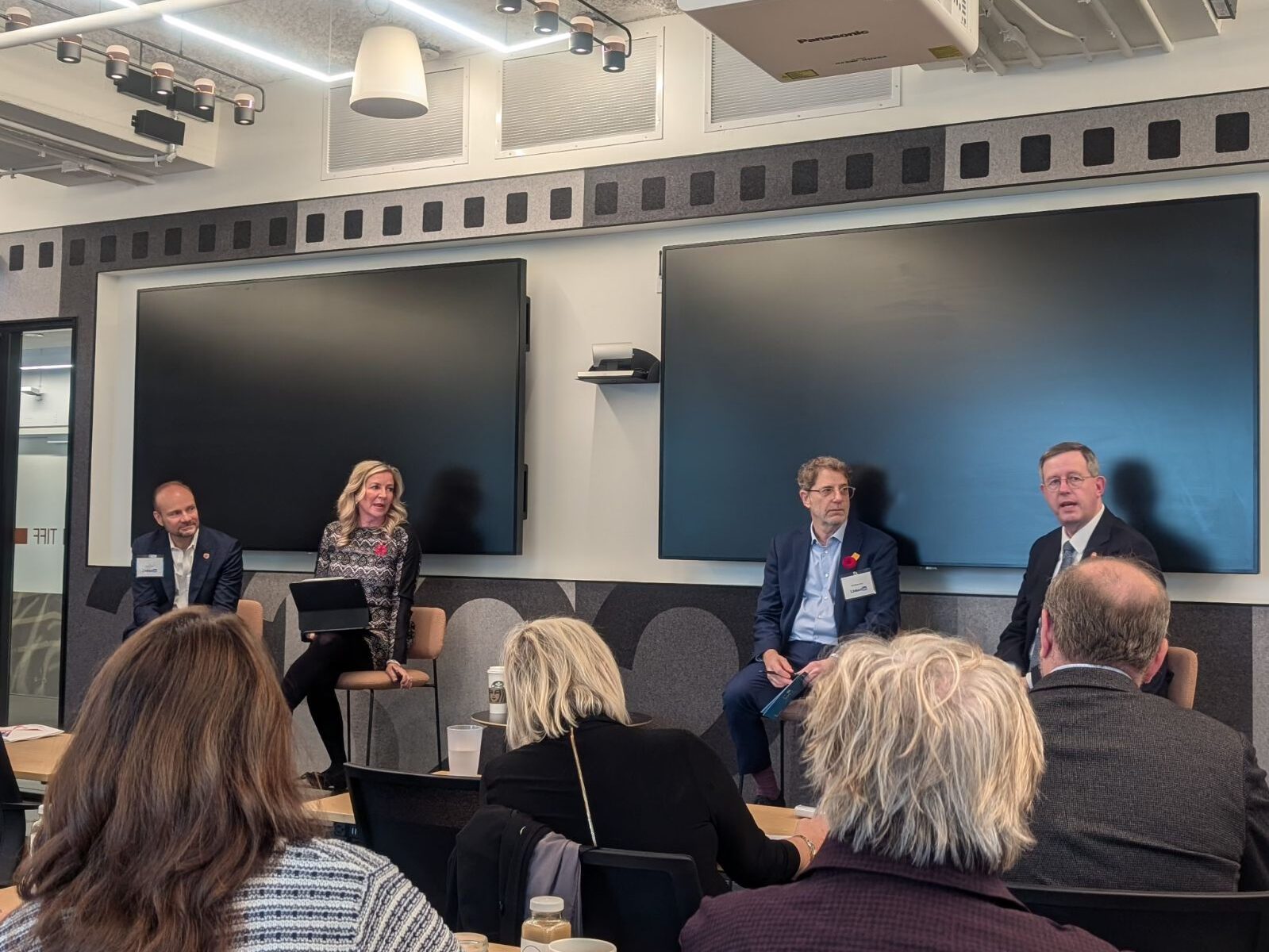
Donald Trump and the opportunities for Canada
Don’t panic, Canada, and stick to what you know.
That was the message at a breakfast discussion hosted by the American Chamber of Commerce in Canada (AmCham) in Toronto after Donald Trump was voted back into the White House. Trump’s re-election could indeed create a series of challenges for Canada, but also provides an imperative to strengthen the relationship, deepening the cross-border relationship in new, positive ways.
“Canada has an amazing opportunity,” said David Olsen, chair of AmCham Canada and Toronto-GTA Chapter. “We have the best trading relationship, it’s fully integrated… Every sizeable U.S. company has sizeable operations here. They’ve great relationships between premiers and governors. JD Vance has relationships with folks here in Canada as well. So I think this is actually an opportunity.”
Those opportunities include areas like arctic defence, technology and, most important in the short-term, critical minerals and energy. For example, as Trump looks to limit Iran’s ability to export energy globally as part of the unfolding conflict in the Middle East, the U.S. “will need help from Canada and others to backfill that capacity,” Olsen told the room.
Similarly, reducing western allies’ reliance on Russia for gas or on China for critical minerals could allow Canada to make itself an appealing ally for Trump. “I don’t mean to be pious, but you know how the old church hymn goes…’Whatsoever you do for the least of my brothers, you do for me?'” said Christopher Sands, Director of the Canada Institute at the Wilson Center in Washington, D.C. “With Donald Trump, it’s ‘Whatsoever you do to support the allies, you are actually benefiting the U.S.'”
The U.S. under Trump will clearly have a more ‘America first’ attitude, which Canada will have to contend with. Trump has repeatedly threatened that his administration will impose high tariffs on imports to the U.S. During his campaign for president, Trump said his administration would impose a 10 percent across-the-board tariff on imports. That could put Canada in a “tough spot,” said panellist Edward Greenspon, President and CEO of the Public Policy Forum. (TD Economics estimated it could decrease Canada’s GDP by 2.4 percent over two years relative to baseline projections.)
“We’re going to have two choices if and when tariffs come, as they probably will,” Greenspon said. “We’re either going to join with other countries in the world retaliating with the United States, trying to make the price of this too high… or we petition for an exemption” where Canada’s record of success is “so-so,” Greenspon said.
Less immediate, but still looming, is a question around the future of the North American free-trade deal signed in 2020, the USMCA, which replaced NAFTA. In October, Trump said that upon taking office in January, he will notify Canada and Mexico that he’ll invoke its six-year renegotiation clause, putting its potential end date in 2026. “It’s coming due very soon,” Trump told a Michigan crowd. “Oh, I am going to have a lot of fun.”
“For better or for worse, it’s going to come up for review,” said Sands. “I do think that the president sees it as an achievement of his, but he’s going to come and want more things” rather than a full withdrawal.
Canada has time now to prepare for that eventuality, including, Sands said, figuring out what new provisions could be included that not only speak to Trump’s message of American protectionism, but that also could benefit Canada. He pointed to the Inflation Reduction Act, which stipulates that even if parts of EV batteries come from China, if they are manufactured in North America, they are considered fully North American. “Why not put it into the USMCA and make it a formal part of the rule of origin?” Sands suggested.
In the end, Canada should leverage its familiarity with the U.S. and its leaders. Indeed, issues like imports from China should remind Canada that, as different as Trump is to his predecessor in many ways, when it comes to key issues for Canada there is “substantial continuity” between him and Joe Biden, Sands said.
The request that other NATO countries commit at least 2 percent of GDP to military spending is another example, as is the concern over immigration. (The latter of which, Greenspon noted later, Prime Minister Justin Trudeau may try to run against to win political points domestically, “but I don’t think that would be a winning hand.”)
And Canada has dealt with Trump himself before, too, and should know well by now how he likes to negotiate. “President Trump is incapable of seeing a win-win,” Greenspon continued. “All wins must be in his column… so we need to figure out how to make it a win for him and a win for us.”


